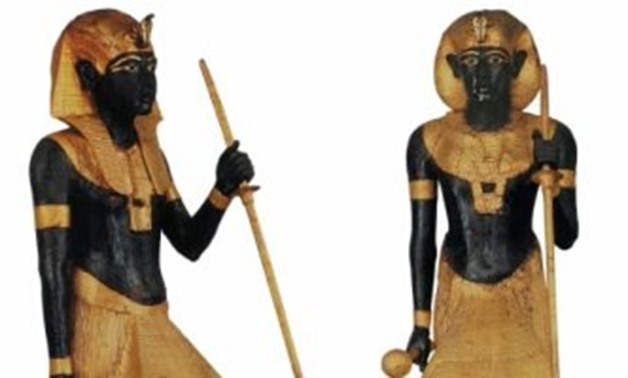
The cloned statue of Tutankhamen - Egypt Today.
CAIRO - 21 June 2019: Ministry of Antiquities put a cloned statue of the famous Egyptian king Tutankhamen in the lobby of the Cairo Stadium on the occasion of the kick off of the African Cup of Nations on June 21.
Tutankhamen was born in the 18th Dynasty around 1341 B.C. and was the 12th pharaoh of that period. Tutankhamen did not accomplish much himself; he was placed on the throne when he was a child, and Egypt’s prosperous era was beginning to decline with the rise of Pharaoh Akhenaten and his new cult.
Sir Howard Carter, British archaeologist and Egyptologist, had made it his life’s quest to find the tomb of King Tutankhamen.
When Carter had begun to work in Egypt in 1891, most of the documented Pharaohs had their tombs discovered. One, however, proved to be elusive; King Tutankhamen, whose resting place had yet to be found and who Egyptologists knew very little about.
With the end of World War I, Carter made it his goal to be the first to uncover the tomb of Tutankhamen. Carter had worked in Egypt for 31 years since he was 17, using his skills as an artist to copy inscriptions from walls.
He would then become appointed inspector-general of monuments in Upper Egypt. In 1907, he started to work for George Herbert, the fifth earl of Carnarvon, who would aid him in his quest to uncover the lost tomb of Tutankhamen.
Carter was certainly dedicated, spending massive amounts of money and time in order to track down where the tomb might lie.
With Lord Carnarvon as his sponsor, he began working earnestly at excavating the Valley of Kings. Alas, even after five years of work, Carter wasn’t able to report back on anything substantial.
He refused to give up however, tirelessly working to fulfill his quest, and soon enough, Carter would be rewarded beyond his imagination.
The discovery of steps beneath the sand on November 1, 1922 was a breakthrough for Carter. At long last, his tireless search for Tutankhamen would finally bear fruit.
Carter announced the discovery on November 6, and it took three weeks until he could begin work on excavating into the tomb.
Workers exposed all of the steps and the sealed doorway into the tomb, which at one point had been broken in by tomb robbers but resealed again, leading to hope that the contents had not been plundered.
Carter finally entered on November 25, finding evidence of resealed holes but noting that it had likely been thousands of years since anyone had entered again.
When Carter made a hole inside the sealed door and peeked inside, he was left astounded. Gold flooded his senses, and animal statues, rich perfumes, piles of ebony, childhood toys and the Pharaoh himself adorned the room alongside countless other treasures.
It was a bounty of riches the likes of which had never been seen before. Carter couldn’t have anticipated this finding in his wildest dreams.

Comments
Leave a Comment